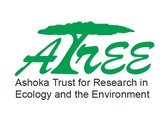When I first came to Tirunelveli way back in 1986, it was the beginning of summer. I was travelling by train and sitting by the window I could see the semi arid landscape pass by in shades of brown with occasional scattering of green. I could see peacocks, ibises, storks, egrets, patridges here and there; some in the fields, some in barren lands and some in small pools of water. I have not seen so many birds except in Gujarat and other parts of north India and this journey has since then remained strongly in my memory. But the opportunity to study this landscape came only in 2008 and it was timely because over the last 20 odd years I have seen irrigation tanks converted to paddy fields or used for urbanisation, getting polluted, heavily silted and chocked with weeds. At the same time in the arid land where large trees were present, which often take centuries to grow, have all the way from far away places like Russia! At the same time in the arid land where large trees were present, which often take centuries to grow, have been mercilessly cut for various developmental works offering very little scope for birds and other creatures to persist in the landscape. So the important question that we were asking is how to engage society in conserving the birds and their habitats. As Baba Dioun, the environmentalist, had said, "In the end, we will conserve only what we love, we will love only what we understand, and we will understand only what we are taught’. So there began our journey to help people to love and understand nature first and hope conservation will soon follow. In the Tirunelveli region with its numerous tanks, reservoirs and rivers, water birds are the best to make people realise that there is something to love and cherish. Because they are effortlessly seen, as they are big, don't fly away that easily and at least majority of them tolerate human presence, one can see them for hours if they are not disturbed. To make this happen, over the last few years we have been organizing workshops, talks and field visits to encourage people to watch birds and carried out surveys to show how many birds are around them. For most, it was surprising to know that the bird they have been seeing in their garden or in the nearby pond has come all the way from far away places like Russia! Wetland birds in the Tirunelveli and Thoothukudi districts are poorly studied. So unless we know what is there how can we tell people what to watch and where to watch? We did an extensive survey in 2009 and 2010 on the birds in the region and got some idea of what to expect. In 2011, as most regular readers of Agasthya would know, we organised the first waterfowl census involving people from the districts which not only gave us a better idea about the distribution of waterfowls in the districts but also allowed us to connect with a large and exciting citizens group who are passionate to conserve our feathered friends. The 'Pearl City Nature Society' was formed who gave us the much needed moral and financial backing to carry-out the 2012 census. We believe that this effort can be sustained with more people and groups joining the census in the years to come. A common enquiry that we often get is “what the use of this census and how it can help in conserving our wetlands and birds?” Well, thanks to these annual censuses, we have now identified important areas that need to be protected apart from Koonthankulam which is a Wildlife Sanctuary. There is Va g a i k u l a m , A r u m u g a m a n g a l a m , Kadambankulam, Vijayanarayanam, Nangunerikulam, Vallioor, wetlands around Singampatti and many more that, as citizens of the district, we should vouch for its protection. We could share this information with the forest department to make sure these tanks are free from poaching, cutting of trees etc. but at the same time rights of local people are not compromised. Forming citizens initiatives are not just for birds, it's for all habitats and taxa. You could observe plants in wetlands as some of the participants of 2012 census did, look for frogs, reptiles, snakes, snails and mammals that are all there in the region but poorly documented. We need your help, your voice, your writings, your pictures and anything that would help in protecting the beautiful landscape of Tirunelveli and Thoothukudi districts for posterity from the fangs of unsustainable development.






